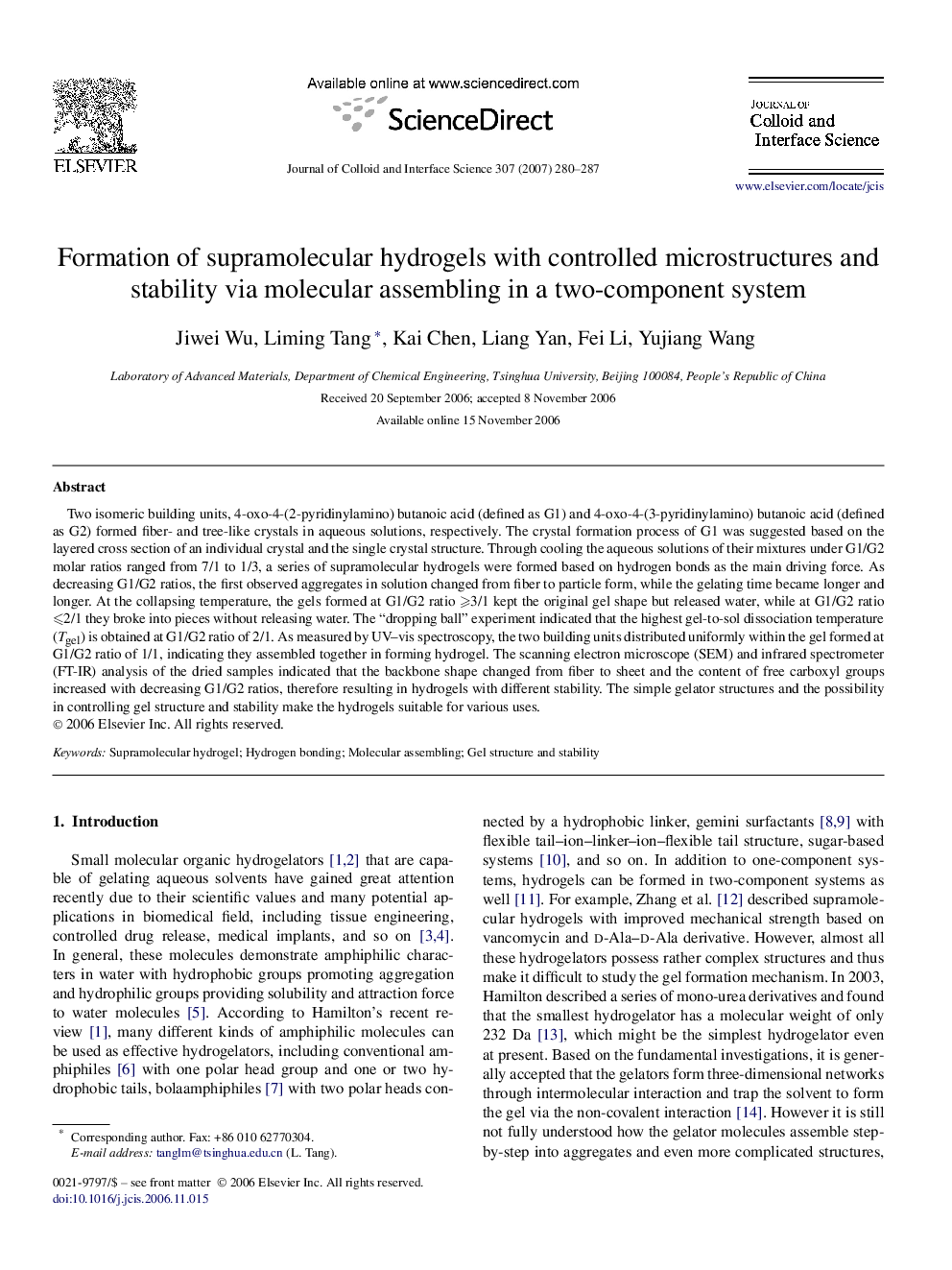| کد مقاله | کد نشریه | سال انتشار | مقاله انگلیسی | نسخه تمام متن |
|---|---|---|---|---|
| 612541 | 880700 | 2007 | 8 صفحه PDF | دانلود رایگان |

Two isomeric building units, 4-oxo-4-(2-pyridinylamino) butanoic acid (defined as G1) and 4-oxo-4-(3-pyridinylamino) butanoic acid (defined as G2) formed fiber- and tree-like crystals in aqueous solutions, respectively. The crystal formation process of G1 was suggested based on the layered cross section of an individual crystal and the single crystal structure. Through cooling the aqueous solutions of their mixtures under G1/G2 molar ratios ranged from 7/1 to 1/3, a series of supramolecular hydrogels were formed based on hydrogen bonds as the main driving force. As decreasing G1/G2 ratios, the first observed aggregates in solution changed from fiber to particle form, while the gelating time became longer and longer. At the collapsing temperature, the gels formed at G1/G2 ratio ⩾3/1 kept the original gel shape but released water, while at G1/G2 ratio ⩽2/1 they broke into pieces without releasing water. The “dropping ball” experiment indicated that the highest gel-to-sol dissociation temperature (TgelTgel) is obtained at G1/G2 ratio of 2/1. As measured by UV–vis spectroscopy, the two building units distributed uniformly within the gel formed at G1/G2 ratio of 1/1, indicating they assembled together in forming hydrogel. The scanning electron microscope (SEM) and infrared spectrometer (FT-IR) analysis of the dried samples indicated that the backbone shape changed from fiber to sheet and the content of free carboxyl groups increased with decreasing G1/G2 ratios, therefore resulting in hydrogels with different stability. The simple gelator structures and the possibility in controlling gel structure and stability make the hydrogels suitable for various uses.
Supramolecular hydrogels with controlled structure and stability were formed via self-assembling 4-oxo-4-(2-pyridinylamino) butanoic acid and 4-oxo-4-(3-pyridinylamino) butanoic acid in water under various ratios.Figure optionsDownload as PowerPoint slide
Journal: Journal of Colloid and Interface Science - Volume 307, Issue 1, 1 March 2007, Pages 280–287